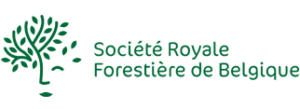Typographer alert | Scolyte
As part of its health monitoring, theWalloon Forest Health Observatory maintains a system designed to track the flight of Ips typographus (bark beetle of spruce). This week's survey showed an increase in captures, marking the start of the first flight in 2022.
Insect numbers down but still significant
The climate in 2021 led to a reduction in bark beetle populations. The result was a significant drop in damage, which was 60% lower in 2021 than in 2020. Despite this decline, spruce bark beetle volumes remained high. Volumes in 2021 were still 30 times higher than those normally collected in our region outside the outbreak period.
The number of insects in the environment remains very high at the start of the season. Winter temperatures remained relatively mild and probably caused only minimal losses in bark beetle populations.
A more traditional spin-off than in the last 4 years
For several weeks now, small local flights of bark beetles have been observed in our forests. Temperatures are still fairly cool at night and for much of the day. The numbers of insects caught in our traps were almost zero until this week. The situation is not uniform across the region. Traps in the southern Ardennes and Gaume are starting to catch their first insects, while traps in the eastern cantons have not yet caught anything.
This is due to the very contrasting local climate in these two zones, with lower temperatures (maximum and minimum air and ground temperatures) and more night frosts in the cold Ardennes than in the Gaume, known for its warmer microclimate. The increase in this area is not yet meteoric. There is no doubt that these figures will rise rapidly with the temperatures over the coming days.
The start of this swarming period is closer to those observed outside the outbreak period. This is encouraging news. It occurs one month later than those seen between 2018 and 2020. This delay reduces the chances of a third generation of the insect appearing in 2022.
What can I do?
A detailed description of the situation, as well as all the measures recommended for managing the typographer, can be found in our October 2018 note: " the typographer and his management ".
The dry weather conditions observed since March and at least until mid-May are once again putting our forests under pressure. If the situation persists, many stands will find themselves in a stressful situation favourable to insect attack. The current climate and the high number of insects in our environment could lead to a resumption of bark beetle activity in certain areas.
We therefore recommend that you give priority to the following actions:
- Clearing windfall: Winter storms have created scattered windfalls in our forests. These provide ideal conditions for the insect to develop. It is therefore important to ensure that they are removed or debarked. These are the typographer's first targets.
- Avoid storing wood in forests : Like windfall, logs are important egg-laying sites for typographers. Care must be taken to remove them quickly. Freshly cut logs should be removed from the forest as quickly as possible to prevent the insect from completing its cycle.
- Monitor your spruce stands carefully: It is vital to spot attacked trees as early as possible. It is essential to pay particular attention to the first symptoms, such as sawdust at the base of the tree, entrance holes, etc. It is important to revisit the sites affected the previous year.
- Felling, evacuating or debarking bark-affected trees: This is the main curative measure.
The buoyant market and rising wood prices are leading some to believe that the crisis is already over. This is not the case. The situation is much more favourable than in previous years, but we must remain vigilant and continue the fight to maintain or accelerate the decline in populations.
Walloon Forest Health Observatory
Writing: Quentin Leroy
